|
|
||
|
||
|
Privacy Policy | Editorial Policy | Profit Policy | Join the Association | List of Members | Contact us | Index | Links |
||
|
Back Go to page: 1 2 3 4 5 6 7 8 9 10 11 12 13 14 15 16 17 18 19 20 Forward
|
||
|
|
||
|
Pedro’s Patter.
Excerpt from Jeff’s book – Wallaby Airlines.
Beating the monsoon.
August, my first month in country, had been and gone. So far, no Wallaby had taken a hit from ground fire. The tell-tale metal patches on all the aircraft were evidence that they had taken small arms fire in the past. And, of course, there were daily accounts from other squadrons that aircraft were still being shot at. There was a war going on around us. It seemed to be only a matter of time before one of us picked up a stray round.
We all knew how and when any of us would take a hit. It would be on some occasion when we were forced by bad weather to fly low over insecure areas to carry out a resupply mission. And, while no one seemed to lose any sleep worrying about when it would happen, the tension in the crew was palpable whenever we had to abandon the safety of our normal procedures and get down close to the ground.
With the Delta in the grip of the monsoon, the weather around and south of Vung Tau and Saigon was frequently terrible, making flying operations very difficult. Small fluffy cumulus clouds formed shortly after the first rays of the sun appeared. During the day they swelled into gigantic towers, fed by warm, moist tropical air from the South China Sea. Tower bred tower until lines of these storm clouds might stretch right across the Delta from the coast to the Cambodian border. Late in the afternoon would come torrential rain, blotting out the landscape. Conditions sometimes improved as the storm clouds drifted away, or worsened as the cool rain falling on the warm surface below formed patchy, fog-like cloud down to ground level.
Of course, there was nothing to stop us flying in cloud. The aircraft were well equipped for instrument flight, and we were all instrument-rated pilots. But although the country was liberally equipped with navigation aids, these were located at major bases, and were of little use to a Wallaby pilot attempting to get into a small outpost in bad weather. The only way to find such places was to maintain visual contact with known ground features, and fly below cloud. If this meant flying below 2500 feet, our ground fire safety height, the unwritten rule was: ‘Fly as low as possible!’ A corollary to the rule was: ‘Ignore the startled looks of the passengers’.
At this time of year Ca Mau, our 406 mission fuel and lunch stop, always seemed to be under a line of storm clouds and almost invisible in torrential rain. On many occasions during this period, I remember having to get around and under the rain-bearing cells to get in. One particular day, the clouds stretched right across the Delta. The only way in was to make a low-level dart under the showers from about five miles out. As I pushed the aeroplane down to treetop height, I wondered again if anyone on the ground had us in his gunsights.
The airfield was harder to find these days, especially in bad weather, having been rebuilt and relocated five miles out of town. I was relieved finally to see the strip of wet PSP glistening through the curtain of rain and wasted no time loitering over the surrounding rice paddies, most of which were effectively under Viet Cong control.
At the edge of the parking ramp were stacks of metal pallets left behind by C-130 aircraft. Empty POL drums, the drums forming pillars at each corner, supported the pallets. Here and there, the spaces between the drums were filled in with hessian, drawn back to reveal the faces of curious children peeping out. Through the gaps, I could also see adults, and simple personal belongings. The unloading team told us that these pallet-homes sheltered refugee families who preferred the frugal security of a makeshift airfield dwelling to the harassment and tax extortion which were part of rural life out here.
On the other side of the road outside the airfield, more fortunate families lived in mud-walled, thatch-roofed humpies, nudging one another for a place beside the river, which is the universal instrument for irrigation, water supply, bathing and sanitation. At least these people had a river to toss their garbage into unlike the shanty dwellers of Vung Tau, who had to make do with the gutter.
We now had to drive a few miles into town for lunch. The absolute flatness of the Delta stretched away to the horizon either side of the road, the watery monotony of the paddies broken only by a rectangular grid of walkways and clumps of houses. Peasant men and women, coolie hats shading their faces, bent low tending the rice, much of which would find its way into VC stomachs. At the side of the road, grinning kids paused in their play to wave and shout the usual ‘Hi! Uc Dai Loi’, as our vehicle drove madly past. The older ones cheekily wheeled their bikes toward us, slowing our progress. A huge sow grubbed around the mulch of the gutter, searching for food. A water buffalo stood motionless in a paddy completely immersed, except for its head, staring into infinity.
The adults we saw, particularly the very old women, looked impassively in our direction without making eye contact. I wondered how much these simple people understood or cared about the recent elections for a consultative body to draft a constitution.
Even getting out of Vung Tau and into Saigon in bad weather could be a problem. It often rained all night in Vung Tau. Storms, which formed on the higher ground to the west, moved down the Saigon River and out to sea. Being at the tip of a narrow peninsula, we often got up in the morning to find ourselves cut off from the ‘mainland’ by a wall of cloud right down to sea level. One such morning, we were bound for Saigon on the daily courier, and climbed over the base in a spiral before calling Paris to advise them we were ‘going Popeye’ (into cloud). Paris acknowledged in a rather bored voice, instructing us to climb to 12,000 feet and proceed to and hold over the Saigon NDB. He added, almost as an afterthought, that we were ‘number 26’ in the approach sequence!
I had never been above six or seven thousand feet since arriving in this country. We joined the stack of aircraft over the NDB and started our holding patterns. Every few minutes, as an aircraft landed, Paris brought us down a thousand feet as our sequence number decreased. Other aircraft, arriving after us, were stacked ‘on top’ of us. Still more were orbiting in stacks over two other NDBs. Finally, after almost an hour, we heard the magic words:
Wallaby Zero One, take up a heading of zero seven zero, downwind for precision radar approach runway two five. Call Saigon Approach Control on three six three decimal eight.
After five minutes prattling from the GCA controller, who gave us headings to steer and rates of descent to maintain our approach path, we were on the ground at Tan Son Nhut and once more rumbling towards Rebel Ramp. Two people had cause to be pleased about our delayed arrival. Graeme ‘Splinter’ Boxall and Brian Young, replacement pilots for Dick Cooper and John Lanning, were standing on the ramp beside their cabin trunks. Because of the delay, they were able to go back with us on the morning courier, instead of waiting around all day, as our group had to do on arrival a month ago. I must admit, I was selfishly pleased to see them, and to remind them that they had 364 days to go. It made my own ‘sentence’ so much lighter.
They stared wide-eyed at the fantastic array of aircraft around them, just as I had on my first day.
There was a good reason for not flying in cloud if it could be avoided—there was a definite risk of a mid-air collision. While most parts of the country were covered by radar, only jets and out-of-country aircraft were provided with positive radar control. Transports and light aircraft were provided with a ‘flight follow’ service which gave no specific instructions unless there was a known collision risk, or there were notified air strikes or artillery fire in the area. Such aircraft were not subject to any other restrictions on their movement. When their pilots called ‘Popeye’, the flight follow agency was supposed to provide them with traffic information so that they could separate themselves from other aircraft in the area. But since relevant air traffic might include aircraft operating in the same general area which had not called ‘Popeye’, and whose movement details were not accurately known, this information was of questionable value. A recent near miss highlighted this and made me determined to fly VFR (visually) whenever possible. |
||
|
|
||
|
I had been flying a 405 mission on an absolutely foul day. I had already missed Ham Tan, socked in with low cloud and rain and was heading north, looking for Phan Thiet. We were about ten miles off the coast and around a thousand feet under, and seawards of, the cloud cover. Straining to see the cliffs and aerials of Phan Thiet through the murk, I was suddenly conscious of a dark patch below and ahead of us. Reacting instinctively, I banked the aircraft away violently just in time to avoid colliding with a C-123 that materialised out of the gloom. I could not imagine how its crew expected to survive flying low level in cloud, unnotified.
The hazards of monsoonal weather were not limited to flying. After dodging thunderstorms all day, I decided to go downtown after dinner for a haircut. The weather looked threatening, but it had not rained yet, and I picked my way through the usual crowds of street hawkers, shoppers and pleasure-seekers to the funny little barbershop we patronised. Sitting in the barber’s chair wrapped in white smock and towel, I realised that a night haircut was a mistake. There was a tremendous flash of lightning followed by a crash of thunder as the storm broke, and all the lights went out—and I mean all—both street and shop lights. They came on again in a few minutes, then went out and came on again another three times. I sat there in the pitch- blackness, acutely aware of my non-English speaking Vietnamese barber whose cutthroat razor was inches away from my throat. Could he be trusted? After all, an American soldier had been killed in a brothel near here when a person or persons unknown had lobbed in a hand grenade. But with superb detachment, I sat there quietly in the blackness, preferring to die rather than make a fool of myself by leaving with half a haircut. Of course, when the lights finally came on and stayed on, my throat had not been cut and my wallet was still secure. As far as I could see, the other two patrons were similarly intact.
With September half over, I was still a ‘ground fire virgin’; in
fact the whole squadron seemed blessed with good luck, in spite of
frequent exposure to possible risk. I had done several mail run
missions in bad weather, and been forced to fly low to get into
places like Ca Mau several times, but had encountered nothing
unusual. I began to wonder whether some of the stories we had heard
were exaggerated, or whether the pilots involved ha
As if in answer to this question, a US Army Caribou limped home to Vung Tau one day after taking a direct hit from a large calibre weapon. The crew had been on a Special Forces resupply mission north-west of Saigon, and had strayed a little too close to the border. The shell that hit the Caribou had blasted a jagged hole about two feet in diameter in the tailplane. A group of us stood on the ramp underneath the tail staring up at blue sky through the hole, realising that a few inches either way meant the difference between a safe landing and oblivion. A cold hand clutched at my stomach. I am sure we all thought: ‘It could have happened to me’.
It was good to get away from the dreariness of the Delta and monsoonal weather, and head off again for Nha Trang. The northern part of the country was still in its dry season. The monsoon here came some months later than that of the south. My flying partner was again John Harris. We had not flown together since Danang, and were both looking forward to six busy days of Special Forces resupply work. Coming out of Saigon, Paris gave us several vectors around air strikes that were in progress in the foothills of Phuoc Tuy Province. No doubt the VC were making their presence felt during the current build-up of Australian Army forces in the area. We gave the gaggle of F-100 fighters a wide berth, although we could quite clearly see the brilliant flashes made by the phosphorus warheads of their rockets as they thudded into their targets far below. A tiny Cessna ‘Bird Dog’ FAC (Forward Air Controller) aircraft circled just above the treetops, calling the fighters in on each run. Perhaps the pilot was one of our RAAF colleagues. There were no RAAF fighter squadrons in Vietnam so some fighter pilots were posted in as FACs to get operational experience.
As we approached the coast, we noticed a large battleship anchored a
couple of miles out, its guns pointing inland and periodically
belching fire and smoke. From the angle of the gun barrels, it
appeared to be aiming at the same general area being softened up by
the F-100s, and firing right across our flight path. This was a
little disconcerting, and we asked Paris about it. They advised in a
matter- of-fact manner that they had no information on any naval
firing, and asked what were our intentions. No brilliant ideas came
to mind. We decided to continue, judging we were below the apogee of
The pace of this detachment was hectic, as usual. We shuttled west to Gia Nghia and north to Duc My, Van Canh, Tan Rai and Buon Brieng with roofing iron, nails, timber, boxes of canned food, livestock and POL. We also carted artillery shells and mortar bombs to a place called Chu Dron, one of a string of new artillery bases north-west of Nha Trang, and six miles from the border. If we were going to get shot out of the sky like our US colleague, this was as good a place as any.
This was my first visit to an artillery base. Fire Support Base Chu
Dron was well within a shell’s range of the Ho Chi Minh Trail, the
VC supply route from North Vietnam. It stood on a clearing hacked
out of virgin jungle miles from anywhere. It was there for one
reason only, to pound the Trail with its huge 175mm artillery pieces
to slow down the flood of men and materials from the north. Our part
in this activity was to feed these fearsome-looking monsters. The
M-107 175mm self-propelled gun was an awesome piece of equipment.
According to James Arnold’s book, it was the longest-range gun
operated by the US artillery in Vietnam. It was capable of shooting
a 175-pound shell some 20 miles in a fast, low trajectory, but paid
for its long range in accuracy. The M-107 had a hydraulically
operated earth-moving blade on the back allowing it to fortify its
own position. Its major use was in preparatory bombardments for
establishing bases where the enemy least expected or least desired
them. A typical battery had six guns, but was often split into three
two-gun units
Ten miles out from Chu Dron, we called on the local artillery advisory frequency. The voice at the other end sounded too busy to talk to us, as though its owner had one hand on the breach block and the other on his radio transmit button. The artillery pounded away continuously, the deafening roar accompanying each fiery belch making the whole landscape shudder. A pall of dust and smoke hung in the air and the acrid smell of cordite penetrated every corner of the aircraft, even before we landed. Our Wallaby was one of an armada of aircraft shuttling shells to feed the hungry guns. The sides of the red dirt runway were stacked with random piles of ammunition. There was no parking area. Aircraft simply arrived, reversed to the edge of the strip, and dumped their pallets of ordnance.
|
||
|
|
||
|
Armoured personnel carriers (APCs) and caterpillar-tracked vehicles crowded the space around the mobile artillery pieces, moving the shells to where they could be manhandled into the loading chambers of the mammoth guns by teams of sweating ‘grunts’, as they call US foot soldiers. Hundreds of empty shell cases littered the ground. The base had been set up in such a hurry that the tents used to accommodate the gun crews were also right beside the strip, in the middle of the red dirt and stacked ammunition. You could not get much closer to your job than this.
Next day, we were tasked to do an airfield survey on a place called Duc Lap, 80 miles west of Nha Trang and a mere two miles from the Cambodian border. The camp and strip had been abandoned after being overrun by the VC 18 months ago. We were told that the strip had been recently re-secured, and was now required to mount search and destroy missions. Our job was to check its suitability for Caribou and C-123 resupply operations. A C-123 pilot and a photographer from a squadron at Nha Trang were detailed to accompany us to obtain pilot briefing material. Duc Lap was not far from the spot where the US Army Caribou from Vung Tau had been hit a couple of weeks before and uncomfortably close to the border. Finding the camp and strip among featureless jungle was a major problem, as it was on the fringe of radar and TACAN coverage, and the accuracy of maps in this area was suspect.
We certainly did not want to suffer the same fate as our US Army counterparts had due to a navigational error. We arrived at the given reference point, a certain bearing and distance from Ban Me Thuot, the nearest TACAN. Underneath the aircraft was an unbroken carpet of green. By unanimous agreement we agreed to stay for 30 minutes only, and give it away if we could not locate our target airfield. We began a cautious search pattern north and south of the reference point, finding a track and what looked like a strip several miles from where Duc Lap was supposed to be on the map. It vaguely resembled the layout of the camp on our briefing diagram.
In this atmosphere of uncertainty, we called up on the radio frequency we had been given and, to our relief, an American drawl answered. On approach, the neglect of the past 18 months became obvious. The area around the strip was overgrown with lantana, the vines reaching down to its edges, explaining why it was difficult to identify it as a runway. The surrounding thick jungle revealed no signs of habitation or occupation whatever. But for the voice on the radio, we would have had no alternative but to turn back for Nha Trang. During the landing run, a flash of sunlight glinting on steel momentary distracted me from steering the Wallaby down the springy green strip, which was more like a fairway on a golf course than a landing field. At intervals each side of us and hidden among the lantana, I noticed brown faces and hands holding rifles, the connecting bodies in camouflaged fatigues almost invisible amongst the jungle vines. They looked like Montagnards, but I could not be sure. As we slowed to a stop, the soldiers moved out from their hiding places towards us, faces expressionless, rifles aimed at the aircraft cockpit. While we were considering whether to stay or get the hell out of there, a lanky American strode out from the jungle, barking orders in a foreign language. I caught the words ‘Uc Dai Loi’. Rifles were lowered and aggressive gestures were replaced by friendly smiles. These troops were Montagnards and had never seen a Wallaby before. They recognised the Stars and Stripes, but our roundel had them really confused. They began an inquisitive inspection of the aircraft, and were delighted when we invited them to take a look inside. We chatted to the American while our C-123 pilot passenger paced out the runway, and the photographer snapped pictures to add to those he had taken from the air.
|
||
|
|
||
|
Finishing early one afternoon due to worsening weather, John and I decided to make an all out effort to find the Buddha. Having lost it previously with Dick Brice among the maze of Nha Trang side streets, this time we had pinpointed its position from the air to help us find it in the Ford pick-up. From the ground it was even more impressive, towering majestically 50 feet or more on top of a hill behind a large temple complex set in a garden of tropical trees and shrubs. Huge flights of stone steps ascended from ground level to the Buddha’s feet and, from where we stood, seemed to rise to heaven itself. The spicy aroma of incense wafted through the bougainvillea as devotees lit joss sticks to honour their ancestors. Saffron-robed monks told fortunes for, and accepted offerings from, peasants, soldiers and businessmen in an unreal island of calm amid the tension and noise of war.
After Nha Trang, John and I were glad of a day off. We decided to spend it looking around Saigon. We hitched a ride on the morning courier, intending to spend several hours exploring the city centre. Everything in Saigon was on a larger scale than Vung Tau or Nha Trang, the shantytowns on the outskirts, the public buildings, and the traffic. The drive from the airport was hair-raising, with maniacal drivers seemingly hell-bent on passing everything and mowing down whoever or whatever got in their way.
|
||
|
|
||
|
The worst drivers were behind the wheels of tiny blue Renault 750 taxicabs that darted among convoys of military vehicles, trishaws and Lambrettas like crabs on a beach. We were therefore dismayed when our vehicle, a blue USAF bus driven by a Vietnamese, terminated at the Cholon PX (Post Exchange – a USAF ‘supermarket’). This meant continuing by taxi. After the inevitable few minutes haggling with the driver of the cab, which screeched to a halt at the kerb as we hailed it, we agreed on a fare and squeezed into the miniature vehicle. The next few minutes I could have cheerfully done without, as we weaved around trishaws, and terrorised pedestrians. I am sure the driver must have been a Viet Cong on R&R.
The so-called Twin City of Cholon, Saigon’s Chinatown, lies just
across the river from Saigon proper. After passing through the
market area, situated in a large square in front of the defunct
railway station, we drove through well- heeled residential suburbs
on the outskirts of the city. Here solid masonry and scented gardens
contrasted cruelly with the flattened POL drum construction of the
shanties along the airport road. Our driver droppe
We saw the famous Xa Loi pagoda, a vast complex of ornate buildings, and headquarters of the Buddhist movement. I remembered reading newspaper articles about violent clashes between government militia and Buddhists in the Diem era, and seeing pictures of the fiery self-immolation of Thic Tri Quang and other protesting monks. Around an elegant, tree-lined city square, the Gothic arches of the Notre Dame Catholic Cathedral blended harmoniously with the graceful colonial architecture of business houses and government buildings. As we stared up at the lofty buttresses of the church, a shifty-looking Vietnamese sidled up, brandishing a handful of old Time magazines. We brushed him aside, but he persisted and, grinning to show a mouthful of gold teeth, opened the top magazine to reveal pornographic pictures loose inside; a somewhat incongruous activity in the shadow of the church. We finally shook him off and strolled down Tu Do, the main business street. This was the heart of the diplomatic sector. All the foreign embassies were within a grenade’s throw of here. Our own embassy occupied one floor of the smart-looking Hotel Caravelle across the street.
Many prosperous merchants had their shops in Tu Do selling gemstones, local art works, and antiques. Browsing through these shops, it took a conscious effort to remember we were in the capital city of a country at war. One antique shop featured, as its central display, an exquisitely hand-carved, enamelled 20-place banquet setting. The table and chairs were decorated with inlaid gold leaf and pieces of jade. The asking price was equivalent to several thousand US dollars, probably a bargain to a diplomatic client. I could not help marvelling that the quiet, mandarin-like gentleman at my elbow could run such a business profitably only a few miles from where his countrymen were dying from VC bullets.
|
||
|
|
||
|
The most enjoyable part of our day was a sumptuous lunch in the rooftop restaurant at the Caravelle. We must have looked out of place in our casual dress among the business suits and dress uniforms of the diplomatic clientele, and the formal attire of the waiters. Unconcerned, we enjoyed our canard l’orange and French wine in unaccustomed airconditioned comfort, and paid the outrageous bill without quibbling. At this time of day, the rooftop outlook was rather uninspiring. By night, when the dock area and squalid outskirts of the city were blanketed in darkness, patrons enjoyed a different view. The diplomatic and command staff and their visitors who came here were treated to a fireworks display of artillery and air-to-ground ordnance flashing around the protected island of the city. This would no doubt serve to remind them that there really was a war going on here, and provide conversation pieces for their dinner parties back home.
At last it happened. On 21 September 1966 one of our aircraft finally took some shots, the first since my arrival. The crew was forced into an approach and landing in bad weather, a situation that presented one of the few opportunities for a small arms marksman on the ground. Fortunately no one was hurt. So much for our lucky run. I mentioned this in a letter home, also that ‘... I have been rather sick over the last two days. Am still not 100% today. It seems in this germ-infested place one must be reconciled to being off colour every few weeks.’ Rather melodramatic. It was my first ‘medical incident’ since late August when I had a violent reaction to a routine inoculation. It started as an unbearably itchy rash that spread all over my body. I had had to abandon my Duty Pilot role and ask another pilot to run me down to see the medical officer. He gave me a knockout injection, which put me to sleep for 14 hours. At least I did not suffer from chronic health problems like a couple of unfortunate colleagues.
After a couple of days off, I was soon back in the Delta dodging thunderstorms, trudging through mud at Camau, and getting soaked in monsoonal rain. In two short months, I had worked harder than ever before, amassed more flying hours than I would in twice the time back home, and seen most of the country. The long days, the monsoonal weather, and our austere diet were starting to become a drag, particularly during any lengthy period spent at Vung Tau. And, of course, I was homesick. In mid October, I ‘escaped’. It was my turn to fly the monthly courier to Butterworth, Malaysia. After a week’s postponement due to aircraft serviceability problems the trip was finally on. I could not believe I was actually leaving Vietnam until I saw the Soc Trang TACAN, the southernmost navigation aid in the country, ticking off the miles behind me. What did not excite me was the knowledge that in five days time I had to come back .
|
||
|
Your best teacher was you last mistake.
|
||
|
A Vote of Confidence!
Spartans (the Caribou replacement) prove their worth during recent operations in Papua New Guinea, as Air Force personnel help maintain the peace during national elections. CAPT Jesse Robilliard reports "The integration of Air Force’s new battlefield airlift capability into the ADF continues to gather pace with the completion of the first operational deployment of the C-27J Spartan. Two aircraft from No. 35 Squadron at RAAF Base Richmond have completed their involvement in Operation Hannah, the ADF’s contribution to the whole-of-government effort to support national elections in Papua New Guinea.
Deployed alongside the Spartan as part of JTG658 were a C-130J Hercules from No. 37 Squadron, two King Airs from No. 38 Squadron and five Army MRH-90s. FLTLT Oliver Kersnovski, of 35SQN, said Operation Hannah was an important test of the Spartan. “The C-27 brings a battlefield airlift capability, which means that we go to shorter strips than a larger aircraft like the C-130,” he said. “But we can take more over a further distance than the MRH90.” Alongside their Air Force and Army colleagues, members of 35SQN helped deliver 45,350kgs of election materials and supported the movement of about 200 PNG security personnel around the country.
Operation Hannah’s election support mission was requested by the PNG government. JTG658 personnel and capabilities delivered a plan drawn up in conjunction with the PNG Electoral Commission and PNG Defence Force. FLTLT Kersnovski said the locals were very friendly. “They always come out to the airfield when they see an aircraft land and quite often, even though we’re not stopping for long, they like to take photos with our loadmasters,” he said. The Spartan crews worked at a brisk pace during the operation, with 35SQN members making the most of the opportunity to give pilots and loadmasters experience on the new platform.
“PNG is a beautiful country,” FLTLT Kersnovski said. “We’ve seen some terrain that you just never see in Australia. It does have its challenges with a two engine aeroplane (yeah? you should try it in a 206 - tb) . It’s not as easy to fly around as Australia. “We’ve got mountains here that are twice the height of the highest mountain in Australia, which is keeping us on our toes, but it’s a great country to fly around and the terrain here is something that you don’t see anywhere else in the world.”
The Spartan was introduced to the Air Force in mid-2015 and the service is building up to a fleet of 10 aircraft. “The Spartan is a great aeroplane to fly and we’re still early in the Spartan’s career in the RAAF,” FLTLT Kersnovski said. “It’s got a way to go in terms of development but down the track this is going to be an amazing aeroplane. Certainly here in PNG we’re proving we’re definitely a very valuable asset.” |
||
|
|
||
|
The average Herc takes 350 litres of paint. |
||
|
The 172.
Having flown airline type aircraft, where basically all ground
support was provided, it was a bit of a shock when I had to do my
own ground support. As an airline examiner on Boeing 727 aircraft
and current on Fokker F28s, I got to know a B727 flight engineer who
also owned and operated a charter company hiring out to people who
wanted some travel time out of Brisbane. He suggested I could hire
one of his aircraft to do dome private flying, specifically a Cessna
172. Although my pilot's licence included various jet aircraft it
amazingly included light aircraft, such as the C172, without
To cut a long story short I survived and agreed to come out again and hire the aircraft. When I came again he handed me the keys and said "you'll need some fuel" and pointed out the refuelling station. At this point I'd never refuelled an aircraft, but I bumbled over and did the job others had been doing all my flying career, started the aircraft and taxied out for a couple of circuits and a recce around the local area being careful to stay OCTA under the Brisbane steps.
A week or two later I brought my wife, daughter and son out to introduce them to the Cessna 172. I put my son in the right hand seat, allowing him to handle the aircraft, and we headed off towards the Glasshouse mountains, (staying OCTA of course). My wife became a bit alarmed, thinking we were going to wipe ourselves out on Mount Tibrogargan. (I should add that I had many hours up as a flying instructor and check captain so I was doing nothing illegal).
I enjoyed flying the Cessna 172, thanked and paid my flight engineer friend, and returned to jets.
|
||
|
In the old days, when you poured a hot liquid into glass or a cup, the glass or cup shattered, that is why when drinking tea, they always poured milk onto the glass/cup first. And that’s where the custom came from. |
||
|
|
||
|
|

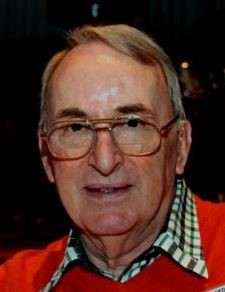

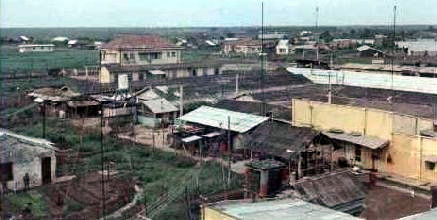
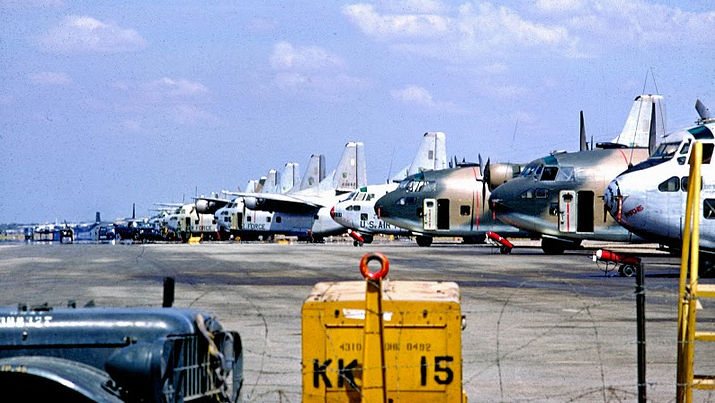
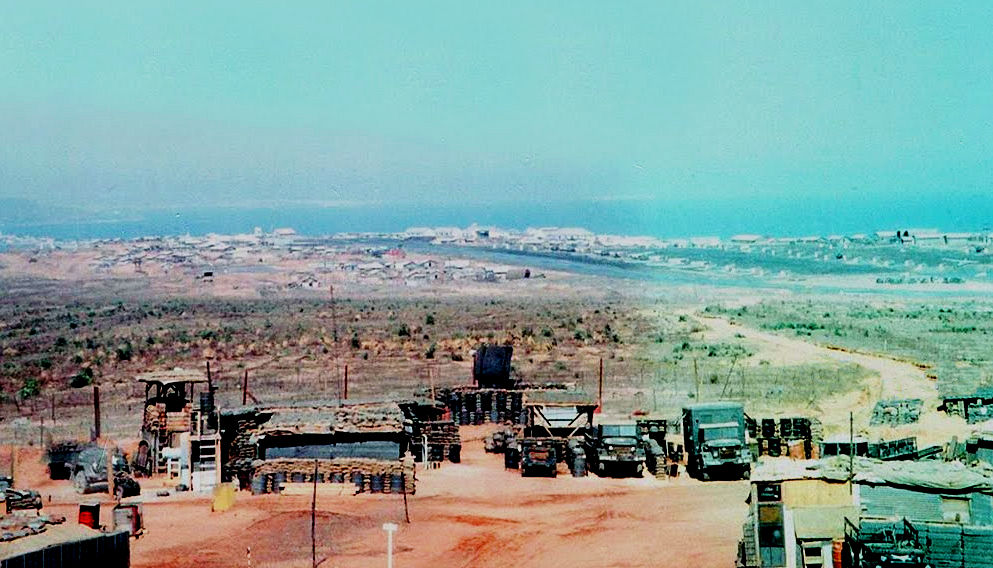
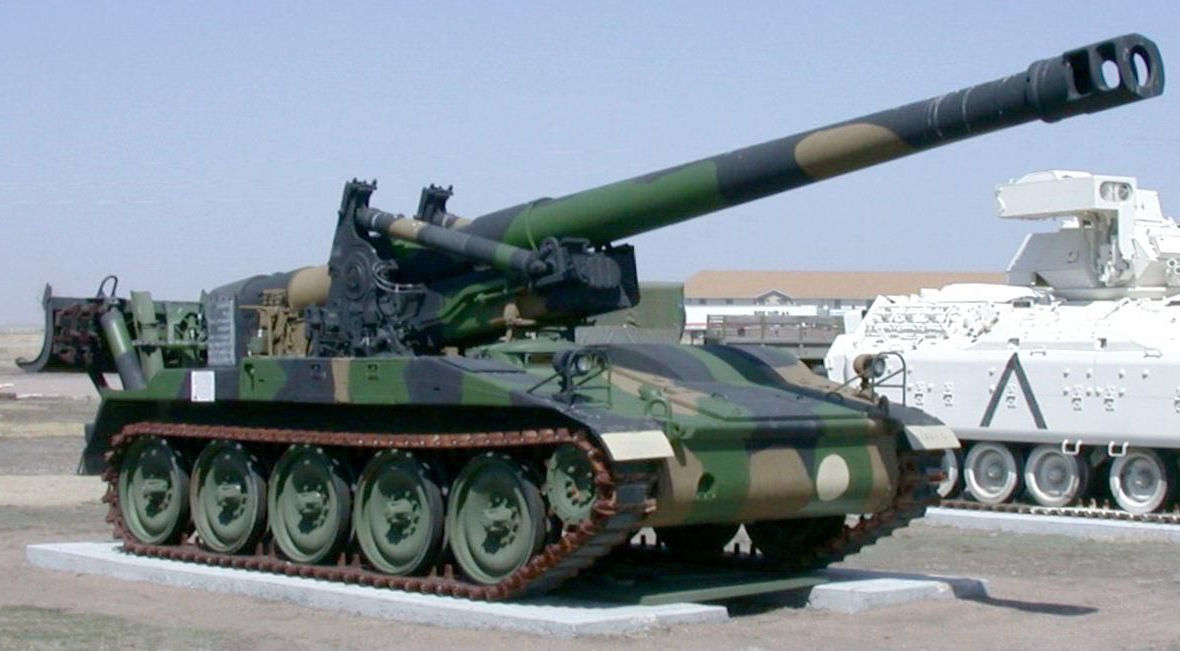 each
combined with similar numbers of smaller weapons. The key to
successful artillery operation was a sophisticated radio network
connecting gun crews and infantry so that rounds could be in the air
before opposing forces had time to dig in.
each
combined with similar numbers of smaller weapons. The key to
successful artillery operation was a sophisticated radio network
connecting gun crews and infantry so that rounds could be in the air
before opposing forces had time to dig in. 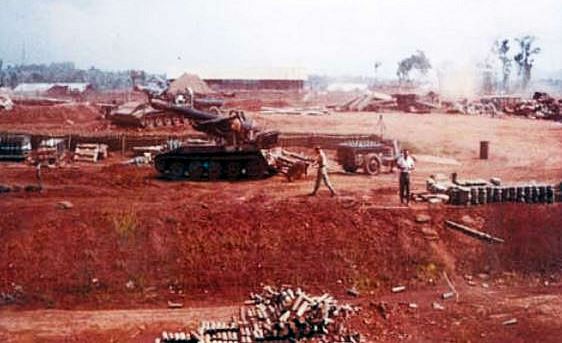
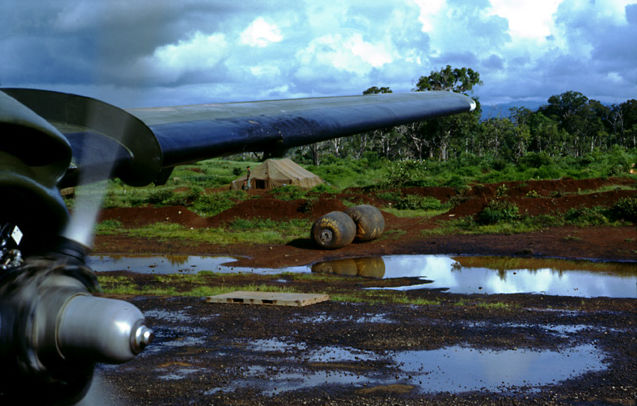
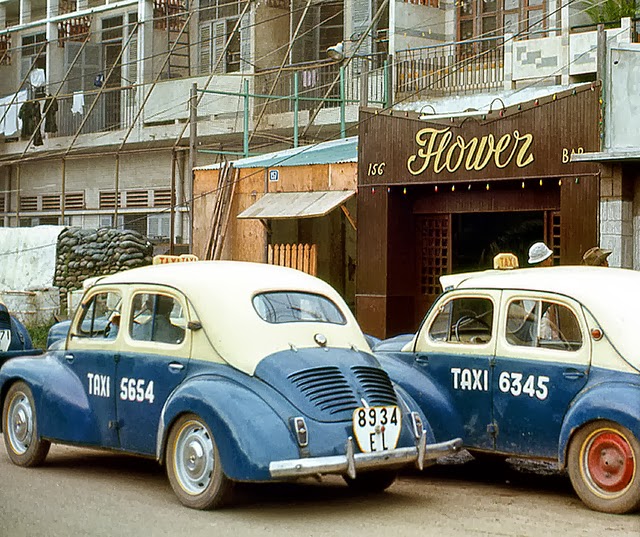
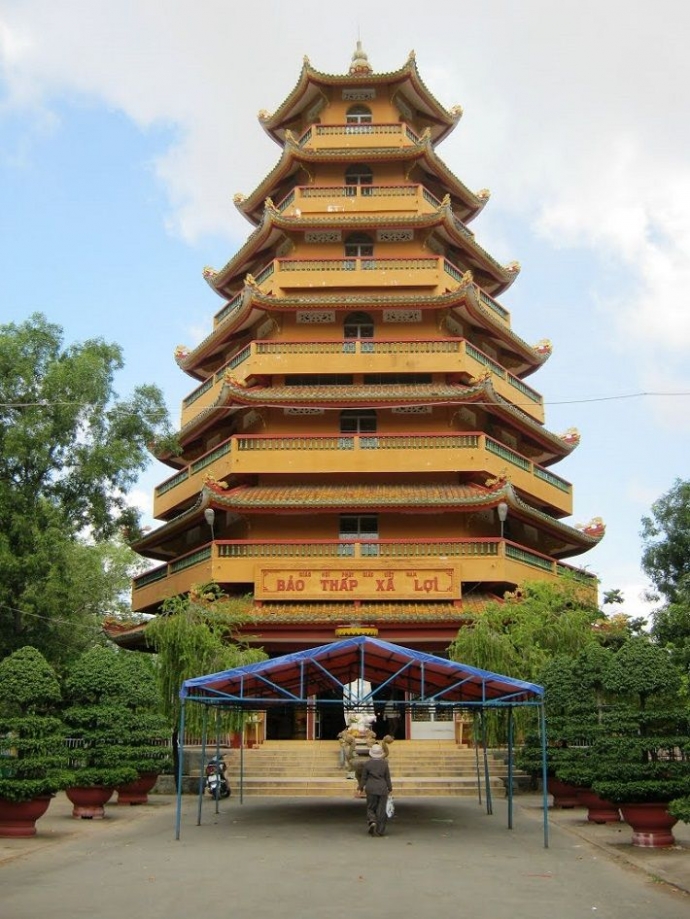 d
us in the centre of the city. The buildings in the city centre were
far more imposing and permanent-looking than those of Vung Tau, and
showed few signs of the various terrorist incidents we had read
about in the newspapers.
d
us in the centre of the city. The buildings in the city centre were
far more imposing and permanent-looking than those of Vung Tau, and
showed few signs of the various terrorist incidents we had read
about in the newspapers. 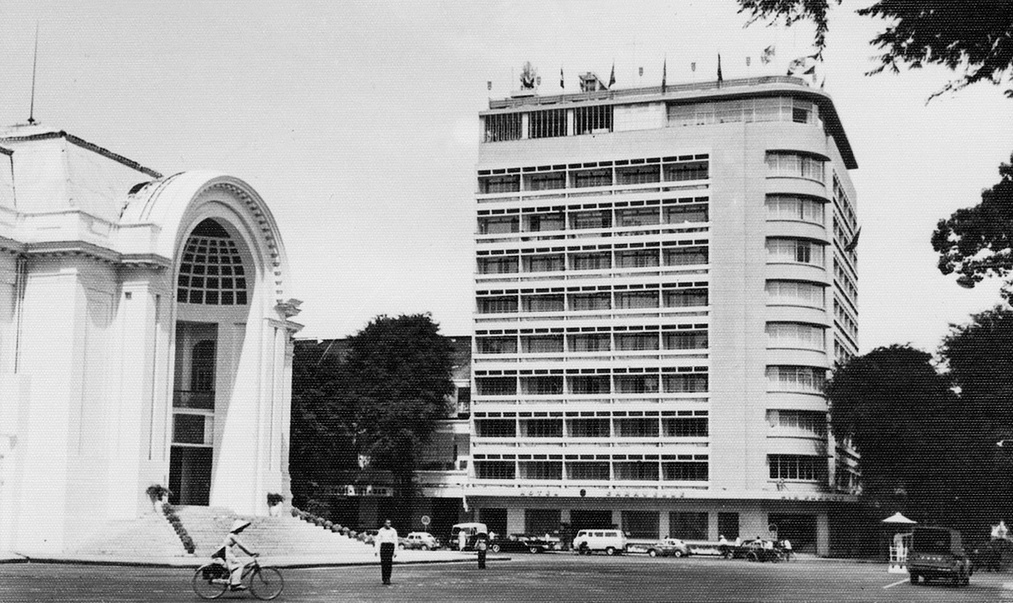
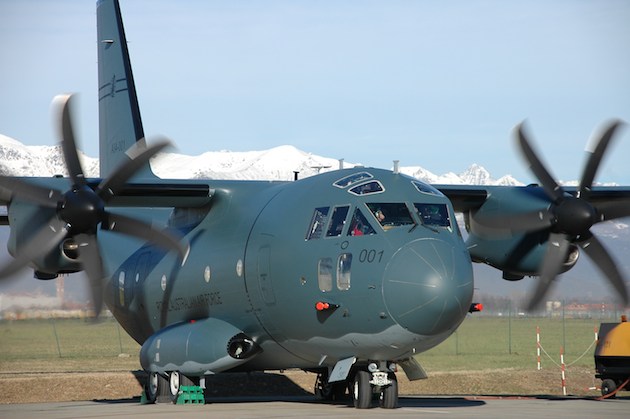
 a
requirement for any training. When I turned up at Redcliff airport
my engineer friend virtually handed over the keys to the Cessna. I
protested that I was a novice and he agreed to guide me on start,
taxi and circuit work. After a couple of circuits we taxied back
into the lines and he climbed out of the right hand seat with engine
running and said some thing like "take it away".
a
requirement for any training. When I turned up at Redcliff airport
my engineer friend virtually handed over the keys to the Cessna. I
protested that I was a novice and he agreed to guide me on start,
taxi and circuit work. After a couple of circuits we taxied back
into the lines and he climbed out of the right hand seat with engine
running and said some thing like "take it away".